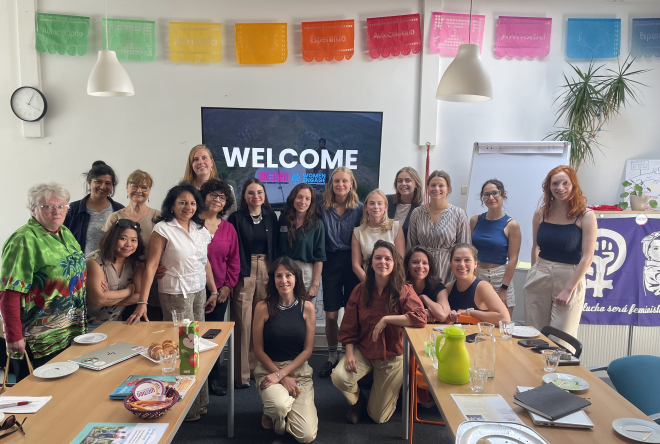
Women-led climate solutions in Tajikistan
Tajikistan is a country that is 93% covered by mountains. Mountain ecosystems are among the most climate-vulnerable, with faster temperature changes impacting both local populations and ecosystem services. This includes 8,000 glaciers, from which over 1,000 glaciers have disappeared over the last few decades. This is alarming, as 60% of all water resources in Central Asia originate in the glaciers of Tajikistan. On the other hand, approximately 70% of the Tajik population experience significant shortages of electricity, especially during the winter months. Moreover, up to 40% of Tajik citizens still rely on solid fuels for cooking, such as low-quality coal, crop waste, dung and wood.
To address these issues, the NGO Little Earth, where Anisa works, started as the first local organization in the country to promote sustainable development and combating climate through renewable energy sources, energy efficiency, and resource-saving technologies among local mountainous communities. Since 2021, the organization has been working in the remote Yaghnob valley, which is characterized by the harsh conditions of the mountains, but also home to one of the most isolated indigenous communities in the country. The local communities face a lack of basic infrastructure, food and energy insecurity, cultural constraints, ecosystem degradation and the region is characterized by a high climate change vulnerability.
The small-scale climate solutions that Anisa and her team promote, based on an intersectional perspective, are focused on solar energy, energy-efficiency and resource-saving technologies. Anisa shared with us the way they raise awareness in the communities on environmental issues and the importance of sustainable resource management, but also how they provide new opportunities by enhancing green solutions (e..g solar cookers) and study tours. Besides, they work towards improving wellbeing of the communities, making sure that women, youth and ethnic minorities engage meaningfully when it comes to the design and implementation of environmental solutions, recognizing their unique roles in addressing climate justice issues. This includes putting these groups in touch with local authorities.
"It is important that women in these communities know that their voice can be heard and that they are not left behind. For many women this is the first time they leave their community (for study tours), but also the first time that they feel that they own something." - Anisa, June 2025)
How is this connected to the Climate Conference in Brazil (COP30)?
Also on an international level, Anisa pushes for climate justice by keeping track of what happens during the international climate negotiations, in order to monitor how they translate these agreements into practice on a local level. For example, how are climate policy finance issues aligned with the mountainous region? And how is that linked to achieving gender equality? Besides, she sees it as her duty to update the communities she works with, on the international developments that are taking place far from their homes, but that do have a direct impact on their daily life. Finally, she aims to engage as many young persons and CSO representatives from Central Asia to the COP processes and climate policies in general. Not only by actually sending youth people to participate in COP’s, but for meaningful engagement of youth perspectives in global climate arena.
Call for solidarity and joining forces
Anisa closes her lecture by emphasizing the importance of Dutch civil society standing in solidarity and ensuring that the voices of civil society, women and other marginalized groups in Central Asia are heard and not forgotten. Namely, being heard and considered in international climate policy is a challenge for the region, as it is often seen as a blank spot on the map for theGlobal South being unfamiliar and often ignorant to the region. Moreover, collaboration among organizations addressing both gender equality and climate action is crucial, as these issues are closely intertwined.